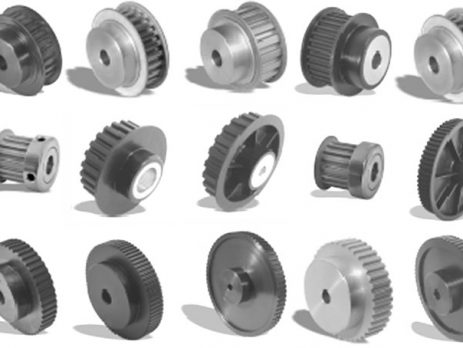What is a Pulley? What Does It Do? What are the types?
What is a Pulley?
In this article, we will explain what are pulleys, what are the concepts and what are their types. In cases where the distance between the shafts is long, the machine elements that are used to transmit the power and movement on the rotating shaft with the help of one or more belts are called pulleys. This pulley, made of cast iron, transfers the movement it receives from the electric motor shaft to the shaft it rotates with the help of a belt.
What are the parts of the hoop?
A pulley generally has three main parts.
Ispit: It is called the part of the circle that the belt touches.
Hub: It is the part that enables the pulley to be attached to the shaft.
Body: It is the part that connects spindle and belly.
The parts of the hoop listed above can be seen in the picture on the right. The body part of this pulley is made up of arms. The reason for this is to reduce the weight of the pulley. The bodies of small diameter pulleys are manufactured full. Machining has not been done yet on this pulley made of cast iron. The hole through which the shaft will pass from the center to the core part will be drilled and processed. In addition, the channels where the belt will sit will be processed according to the belt dimensions.
Where the Pulley is Used
Pulleys are used in machine tools, sewing machines, agricultural tools, gasoline and diesel engines, textile machinery, cranes, lifting and transporting machines.
What are Pulley Types?
Pulley types used in the market are as follows;
Flat belt pulleys
V belt pulleys
Rope pulleys
Poly V pulleys
Tension pulleys
Stepped pulleys
Round pulleys
Idler pulleys
Guide pulleys
Automatic and adjustable pulleys
Synchronized pulleys
Advantages of Pulley
It can be manufactured cheap.
It can transmit power and motion between the miles away from each other.
In sudden loads, the safety element acts as the belt slips.
It works very quietly.
Power losses are minimal. The efficiency is between 95-98%.
It does not need lubrication.
Cycle rate can be easily changed with the use of stepped pulley
Disadvantages of the Pulley
A large strain occurs on the shafts due to tension in the belt.
The transmission rate is not constant due to the belt slipping.
Elongation may occur in the belt due to temperature, moisture, dust and oil.
The tensioner is needed to eliminate the negative effect of the elongations in the belt.


Bir cevap yazın